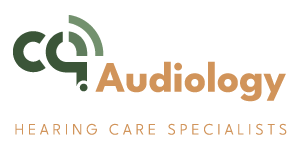Contact Us
We would love to speak with you.
Feel free to reach out using the below details.
Visit our main clinic
- T33 & 34A, City Centre Plaza, 24 Fitzroy Street, Rockhampton, QLD 4700
Get In Touch
- Phone: (07) 4848 6528
- Email: reception@cqaudiology.com.au
Trading Hours
- Mon-Fri 9:00AM - 5:00PM
- Sat 9:00AM - 12:00PM
Get a callback
Fill out the form below and we will contact you as soon as possible!
CQ Audiology Visiting Sites
BARCALDINE
Barcaldine 60 & Better Program
13 Willow Street
QLD 4725
BILOELA
Ace Medical Centre
48 Grevillea Street
QLD 4715
BLACKALL
Blackall Hospital
189 Landsborough Highway
QLD 4472
BLACKWATER
North Blackwater General Practice
14 Blain Street
QLD 4717
EMERALD
Lot 1 Pilot Farm Road
QLD 4720
MOUNT MORGAN
41 Morgan Strreet
QLD 4714
ROCKHAMPON CITY
T 33 & 34A City Centre Plaza
24 Fitzroy Street
QLD 4700
TAMBO
Tambo Multi Purpose Centre
26 Arthur Street, Tambo Queensland 4478
LONGREACH
North & West Queensland Primary Health Sercvies
19 Duck Street, Longreach Queensland 4730
YEPPOON
Keppel Bay Medical Centre
Shopt 26, Keppel Bay Plaza
64-67 James Street
QLD 4703

Hearing Test in Biloela
A hearing test typically takes 30-60 minutes to complete and involves a series of listening tests and examinations by an audiologist or hearing specialist. The assessment is conducted in a soundproof room to minimise background noise, and your hearing abilities are evaluated using tones or words.
If you’re having trouble hearing conversations in noisy environments, turning up the TV or radio to uncomfortable levels, or feeling fatigued after listening, a hearing test may be necessary. Taking this important step allows you to take control of your hearing health and discover the benefits that come with it.
What to Expect During Testing
Your hearing test will typically commence with a thorough examination of your ears by an audiologist or hearing specialist.
They’ll visually inspect your ears for any blockages, such as earwax or foreign objects, and check for signs of infection or other conditions that could affect your hearing. You’ll be seated in a soundproof room or booth to minimise background noise.
Next, you’ll participate in various listening tests to assess your hearing abilities. The audiologist will play different sounds, such as tones or words, through headphones or speakers, and you’ll be asked to respond when you hear them.
These tests will help determine the softest sounds you can hear at different frequencies, as well as your ability to understand speech in various conditions. Some tests may also involve background noise or require you to repeat words or sentences to assess your speech recognition skills.
Signs You Need a Test
Recognising the need for a hearing test can be less clear-cut than the process itself. Hearing loss often develops gradually, and you may not even realise you’re experiencing it.
However, there are some telltale signs that indicate you should schedule a test.
You’re having trouble hearing conversations in noisy environments, such as restaurants or parties, and often ask people to repeat themselves or feel like you’re straining to understand what’s being said.
You may also find yourself turning up the TV or radio to levels that are uncomfortably loud for others. Phone calls can be a challenge, and you may avoid them altogether.
Additionally, you may notice that you’re more tired than usual after trying to listen to people or engage in conversations.
You may even be experiencing ringing in your ears or a feeling of fullness in your ears.
These signs point to potential hearing loss, and a hearing test is the only way to know for sure. If you’re experiencing any of these symptoms, schedule a test as soon as possible.
Benefits of Regular Testing
Regularly undergoing hearing tests can significantly impact your overall quality of life. By catching hearing problems early, you are more likely to prevent long-term damage and improve your ability to communicate with others. When you can hear clearly, you will connect more easily with family and friends, which can lead to stronger relationships and a reduced risk of feelings of loneliness.
You will also experience improved cognitive function, as your brain won’t have to work as hard to process sounds. This can lead to better concentration, memory, and problem-solving skills. Furthermore, identifying and addressing hearing loss can reduce your risk of developing dementia and other cognitive disorders.
Regular hearing tests will give you peace of mind, allowing you to address any issues promptly and take control of your hearing health. By prioritising your hearing, you will be able to maintain your independence, stay engaged with your surroundings, and enjoy life’s simple pleasures, like conversations, music, and nature sounds.
Types of Hearing Tests
Hearing tests are quick, painless, and easy to understand. There are several types of tests, and the one you’ll undergo depends on your age, symptoms, and medical history.
As an adult, you’ll likely have a pure-tone test, also known as an audiogram. This involves sitting in a soundproof room and wearing headphones. Sounds at different frequencies and volumes are played, and you’ll indicate when you can hear them. This test helps identify the softest sounds you can hear at each frequency.
You may also have a speech test, where you’ll repeat words and sentences to assess your ability to understand speech. Other tests include bone conduction tests, which assess your inner ear’s ability to detect sound, and tympanometry tests, which evaluate your eardrum’s function.
Preparing for Your Test
To obtain accurate results from your hearing test, it’s essential you’re well-prepared. Prior to your test, you’ll need to provide your medical history, including any hearing problems you’re experiencing, medications you’re taking, and previous ear surgeries or infections. This information helps your audiologist understand your hearing health and tailor the test to your needs.
On the day of the test, arrive 15 minutes early to complete any necessary paperwork. It’s recommended you bring a friend or family member with you, as they can provide emotional support and help you remember any questions you want to ask your audiologist.
Remove any earwax, earrings, or hearing aids before the test, as these can interfere with the results. Avoid loud noises for at least 24 hours before the test, as this can temporarily affect your hearing.
It’s also suggested you get plenty of rest and avoid caffeine and nicotine, which can affect your focus and concentration during the test. By being prepared and following these tips, you’ll be able to obtain the most accurate results from your hearing test and take the first step towards addressing any hearing problems you may be experiencing.
Understanding Your Test Results
After undergoing a hearing test, you’ll receive your results in the form of an audiogram. This graph shows your hearing threshold at different frequencies, indicating the softest sounds you can hear at each frequency and the degree of hearing loss you have, if any.
Your test results are measured in decibels (dB) and frequencies are measured in Hertz (Hz). In Australia, a normal hearing range is typically considered to be between 0 and 25 dB. If your results show a higher number, it indicates some degree of hearing loss.
The type and degree of hearing loss determine the best course of action. Your audiologist will explain your test results in detail, answer any questions you may have, and provide a written report for future reference.
They’ll discuss the most suitable options for addressing any hearing problems and recommend the best course of treatment.
Next Steps After Diagnosis
Following your diagnosis, you’ll work closely with your audiologist to determine the best course of action for addressing any hearing problems.
You’ll discuss your test results, and your audiologist will recommend a treatment plan tailored to your specific needs.
If you’re diagnosed with hearing loss, your audiologist may recommend hearing aids or other assistive devices.
You’ll work together to select the most suitable device for your lifestyle, budget, and personal preferences. Your audiologist will also provide guidance on using and caring for the devices, as well as adjusting to the new sounds you’ll be hearing.
In addition to recommending devices, your audiologist may also suggest auditory therapy or counselling to help you adapt to your new hearing abilities.
This therapy can help you improve your communication skills and address any emotional or social challenges related to hearing loss.
Your audiologist will work with you to develop a comprehensive treatment plan that addresses your unique needs and goals.
DISCLAIMER: The content on our site is intended for educational purposes only and should not be interpreted as an endorsement or recommendation of any treatments or products without a comprehensive hearing assessment. Users should seek professional advice and fully understand any potential side effects or risks before starting any treatment. Products mentioned on our site are not available for purchase by the public without prior consultation with a hearing health expert.
